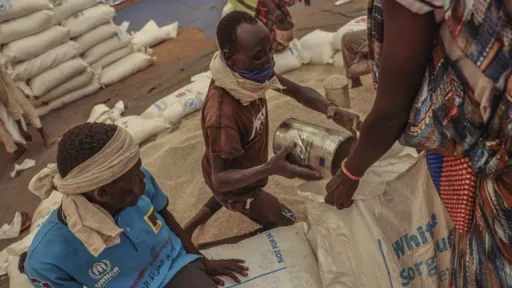By Sylvia Chebet
Dystopian visions of a future riddled with growing food insecurity and its anarchic consequences no longer seem like the stuff of fiction.
Recurrent heatwaves, erratic rains, flooding, and emerging pests and diseases have dragged down agricultural productivity worldwide.
Wheat, the staple of 1.5 billion people in the Global South that includes Africa, hasn't been spared despite being a crop whose adaptability enables its cultivation in a geographical range stretching from below sea level near the Dead Sea to the high-altitude Tibetan plains.
As science looks for ways to stave off this threat to human existence, two new studies initiated by the Mexico-based International Maize and Wheat Improvement Center (CIMMYT) reveal that tapping into ancient genetic diversity can revolutionise wheat breeding and safeguard global food security.
Dr Matthew Reynolds, head of wheat physiology at the organisation and co-author of both studies, believes the early signs are encouraging.
"We are already seeing an impact in Ethiopia, Sudan, Egypt, South Africa, Kenya, Algeria, Morocco, Tunisia, and Libya," he tells TRT Afrika.
"We are at a critical juncture. Our current breeding strategies have served us well, but they must now address more complex challenges posed by climate change."
The research points to a vast, largely untapped reservoir of nearly 800,000 wheat seed samples in 155 gene banks worldwide.
These include "wild relatives" and ancient, farmer-developed varieties that have withstood diverse environmental stresses for millions of years.
Although only a fraction of this genetic diversity has been utilised in modern crop breeding, it has already delivered significant benefits.
All in the genes
One of the studies, published in the peer-reviewed journal Global Change Biology, documents how the traits of wheat's so-called wild relatives enhance survival and environmental sustainability.
It points out that since 2000, the cultivation of disease-resistant wheat varieties was possible without using an estimated one billion litres of fungicide that would have otherwise been sprayed to avoid disease.
"Without transferring disease-resistant genes from wild relatives to wheat, fungicide use would have easily doubled, harming both human and environmental health," says Dr Susanne Dreisigacker, molecular breeder at CIMMYT and co-author of the review.
Sharing new wheat breeding lines increases annual productivity by US $11 billion worth of extra grain.
This has helped conserve millions of hectares of forests and other natural ecosystems.
The study reveals that new, high-yielding cultivars – plant varieties whose characteristics are controlled by how they are bred – have been developed in Egypt, Afghanistan and Pakistan using wild genes that make them more robust and resistant.
"This means more options for farmers, greater genetic diversity for climate resilience, and less risk from weather anomalies," explains Dr Reynolds.
According to researchers, some experimental wheat lines incorporating wild traits show up to 20% more growth under heat and drought conditions compared to current varieties.
The second study, published in Nature Climate Change, highlights the need to scale up exploration and use genetic diversity for improved climate resilience.
Among the traits needed are deeper, more extensive root systems for better water and nutrient access, higher heat tolerance, and improved survival during delayed rains or flooding.
"Tapping into the complex climate-resilient traits so urgently needed today requires both access to greater genetic diversity and a paradigm shift in breeding approaches," says Dr Julie King of Nottingham University, a co-author of the review.
Modern crop breeding has focused on a relatively narrow pool of "star athletes" — elite crop varieties that are already high performers and have known or predictable genetics.
The genetic diversity of wild wheat relatives offers complex climate-resilient traits, although their use is more time-consuming, costlier and riskier than traditional breeding approaches with elite varieties.
New technologies have, however, changed that paradigm.
Uncharted territory
"We have the tools to explore genetic diversity that were previously inaccessible to breeders," explains Dr Benjamin Kilian, another co-author of the review and coordinator of the Crop Trust's Biodiversity for Opportunities, Livelihoods and Development project that supports conservation and use of crop diversity globally.
Among these tools are next-generation gene sequencing, big-data analytics, and remote sensing technologies, including satellite imagery.
The latter allows researchers to routinely monitor traits like plant growth rate or disease resistance globally.
However, realising the full potential of these genetic resources would require global cooperation.
"The most significant impact will come through widespread sharing of genetic resources and technologies," Dr Kilian notes.
New technologies allow crop researchers to precisely identify and transfer beneficial traits from wild relatives, making what has been seen as a risky and prolonged process into a targeted, efficient strategy for climate-proofing crops.
"Satellite technology turns the planet into a laboratory," says Dr Reynolds. "Combined with artificial intelligence to super-charge crop-breeding simulations, we can identify new solutions for climate resilience."
This also applies to other crops with surviving wild relatives.
➤Click here to follow our WhatsApp channel for more stories.
























